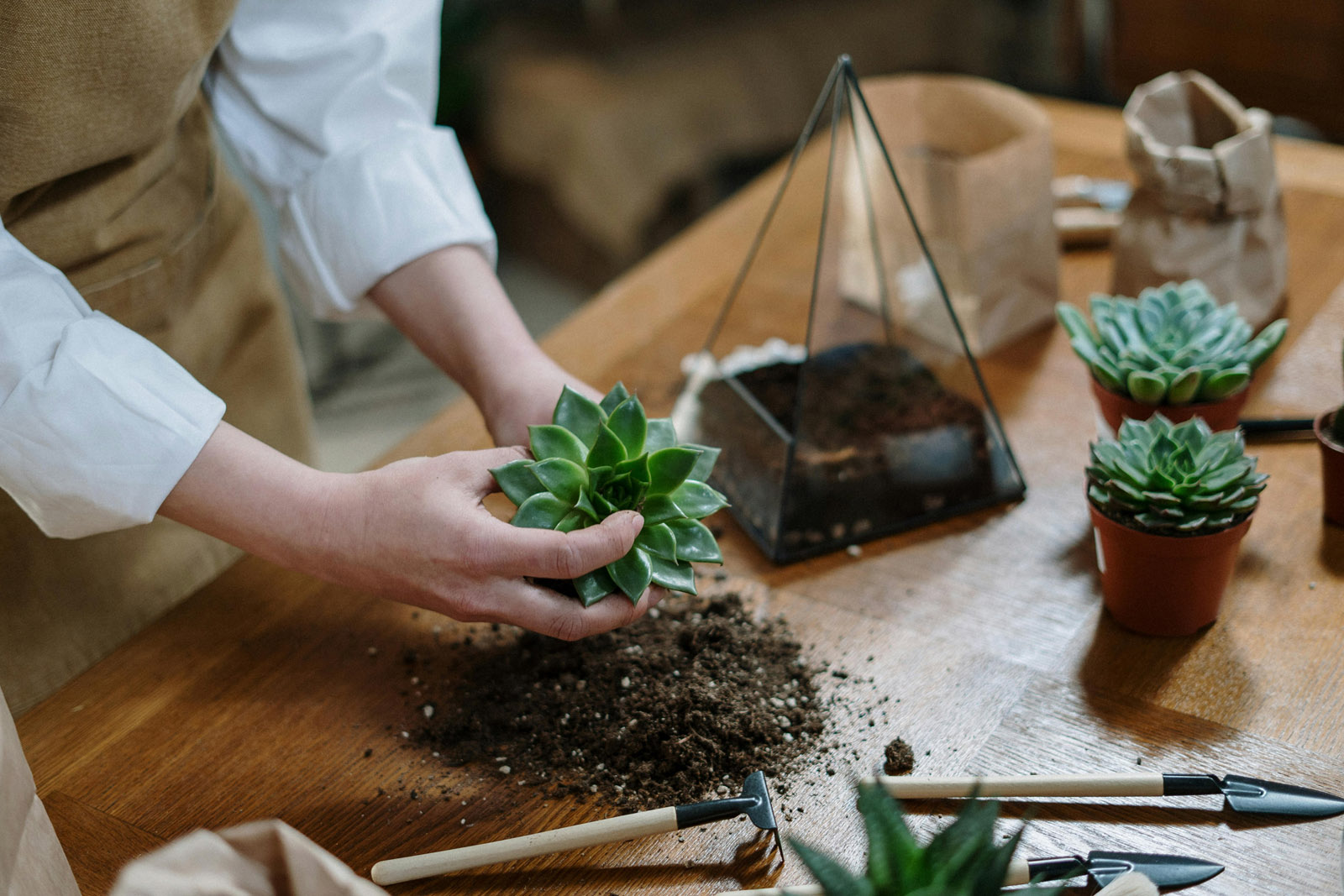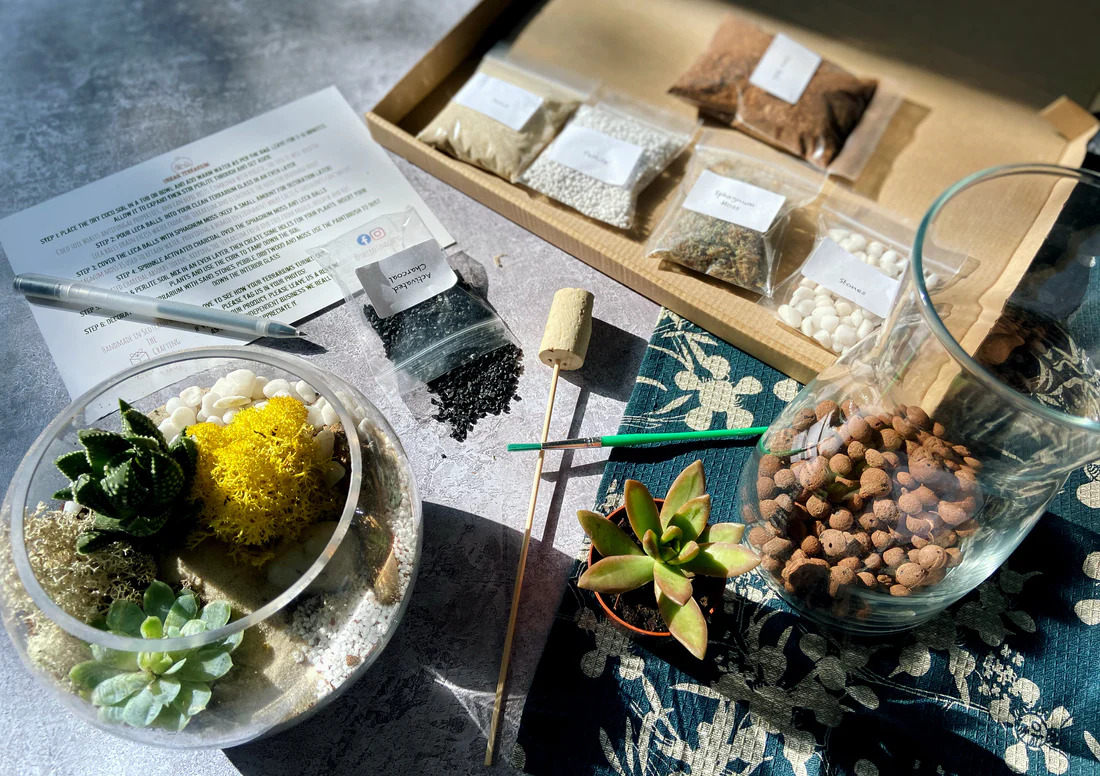Selecting the best plants for closed terrariums is one of the most crucial factor for its long-term success. Many beginner terrarium hobbyists ask the very same question that what are the best plants for terrarium. There are several tropical mositure loving plants that survive very well in a closed terrarium ecosystem. Lets discuss about the most compatible terrestrial plants for your closed terrariums.
Best Plants for Closed Terrariums
1. Pellionia Repens

Pellionia Repens often referred to as the Watermelon Begonia or Ranibow Vine has become one of the best plant of choice for closed terrariums. Native to Southeast Asia, this plant is admired for its striking leaves which are typically small, oval shaped and range in color from vibrant greens to deep purples and reds.

This low demand plant enjoys a humid environment and is one of the hardiest plants in our experience with a failure rate of almost zero. The plant can be placed in the foreground or mid ground inside a terrarium and will lift up any dull spot within the scape.
2. Fittonia

Fittonia is native to tropical rainforests of South America and primarily found in Peru and the surrounding regions. The leaves are generally small elliptical and feature a nature of contrasting veins often in shades of white, pink or red against a backdrop of deep green.

The Fittonia is also known as the nerve plant due to the resemblance of its leaves to a network of veins. This plant demands higher humidity levels which mimics its natural rainforest habitat. This makes it an ideal closed terrarium plant.
Fittonia can be planted as stem cuttings in a terrarium and will root itself in no time. Fittonias are usually planted in the mid ground to add a pop of color to the overall design.
3. Pilea Involucrata

Pilea Involucrata commonly known as a the Friendship Plant hails from the tropical rainforests of Southern and Central America. The leaves are small, round and feature deeply corrugated or textured patterns in contrasting bronze and silver colour.

This unique texture and coloration make Pilea Involucrata an excellent choice for those seeking visually interesting textures in their terrarium design. The plant is easily propagated from cuttings and is generally used as a mid-ground plant in a scape.
4. Pilea Spruceana
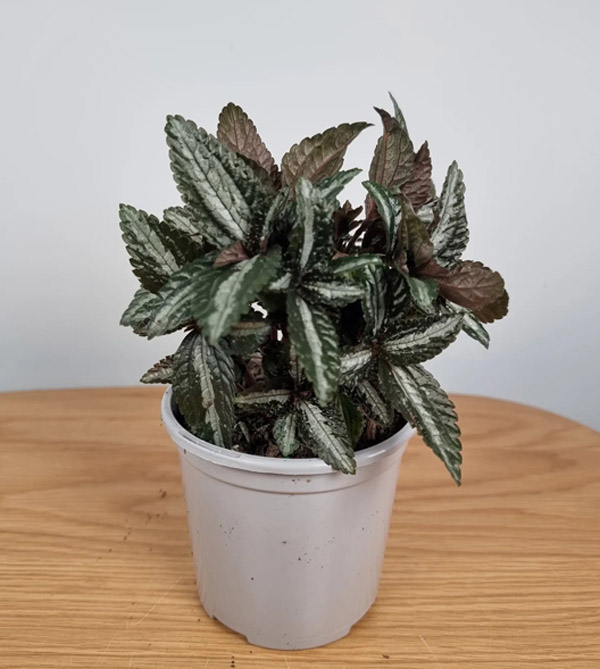
Another plant from Pilea family is the Pilea Spruceana, commonly known as the Silver Tree. It is native to the tropical rainforests of Central and South America. This plant can easily grow from cuttings and is mostly positioned as a mid-ground plant in a terrarium.
5. Marcgravia Umbellata

Marcgravia Umbellata is a botanical treasure found in the lush reinforests of Sout America mainly PuertoRico. It is a part of a genus that includes approximately hundred species, all of which are native to tropical rainforests.
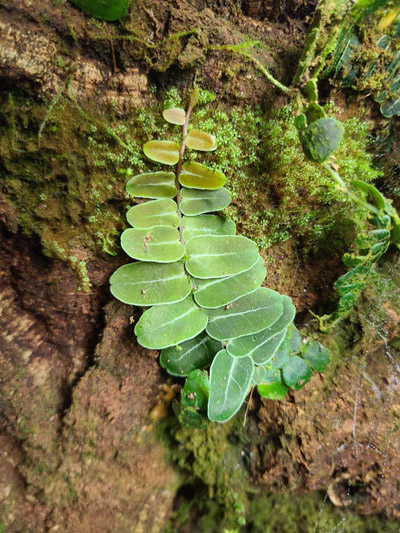
The most striking feature of the plant are its leaves which are shaped like saucers with a silvery white vein running along the middle. Marcgravia Umbellata is a climbing vine and hence it can be used as a climber on a moss wall in the background as well as on other hardscape surfaces inside a terrarium.
6. Strawberry Begonia

Strawberry Begonia is scientifically known as Saxifraga Stolonifera is actually not a true Begonia but rather a member of the Saxifraga genus. This perennial plant is native to East Asia, particularly Japan and Korea.
Leaves of the plant are heart-shaped, dark green and adorned with silvery white veins. The plant produces tiny plantlet-like structures at the end of its runners resembling strawberries hence the name Strawberry Begonia. It can be propagated from runner clippings and makes a very interesting foreground or mid-ground plant in a terrarium.
7. Syngonium
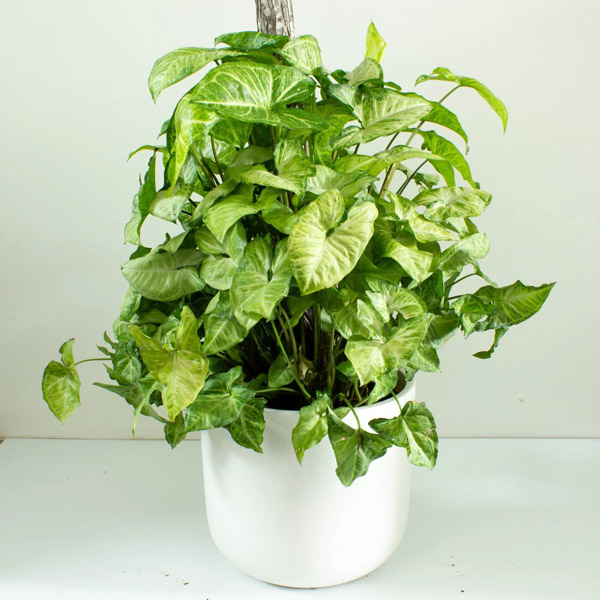
Syngonium commonly known as the Arrowhead Plant is again native to the tropical rainforests of Central and South America. The leaves are typically arrowhead shaped although they can vary in size and color depending on the variety.
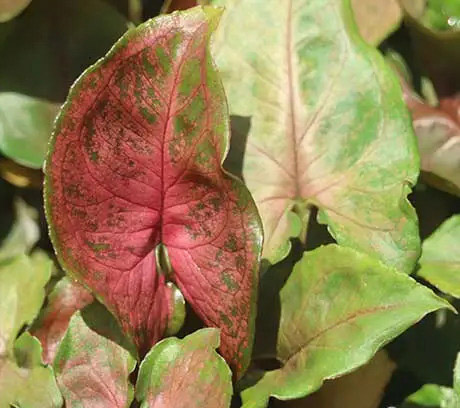
Common leaf colors range from virant green to shades of pink and red. Some varieties exhibit variegation adding to their ornamental appeal. They are mostly planted in the background or mid ground of a terrarium.
8. Cryptanthus

Cryptanthus commonly known as Earth Stars hal from the tropical rainforests of Brazil. The genus Cryptanthus comprises over 50 species each with its unique charm but they are collectively known as Earth Stars due to their rosette-like appearance.
These plants come in a wide array of shapes sizes and colors from vibrant green to shades of red, pink and even purple. Most Earth Stars remain relatively low to the ground and hence are mostly planted in the foreground of a terrarium.
9. Hemigraphis Repanda

Hemigraphis Repanda is native to regions in Southeast Asia and is commonly known as the Dragon’s Tongue. Its slender leaves vary from purple to deep pink in color depending on its environment and creates unique contrast among othe plants in a terrarium. It can be used as a background plant.
10. Aluminum Plant (Pilea Cadierei)

The Aluminum Plant is native to Vietnam and china. The leaves are small to medium-sized, oval shaped and adorned with slivery grey stripes or markings that give them a shimmering appearance. It is easy to propagate from cuttings and usually planted in the mid ground witin terrarium.
Moss and Ferns
11. Selaginella

First on the list is Selaginella. It is often referred to as Spike Moss and is mostly found in the tropical regions of the world. These mositure loving plants typically have small scale-like leaves arranged in a distinctive two ranked pattern along their stems giving them a delicate and feathery appearance.
Species like Selaginella Uncinata, Selaginella Kraussiana and Selaginella Erythropus are very popular for their attractive foliage and low maintenance requirements. The tiny leaf structure makes it a perfect candidate for nano builds where match to scale plays a vital role. These plants are easily grown from cuttings and can be used as a foreground or mid-ground plant.
12. Ferns
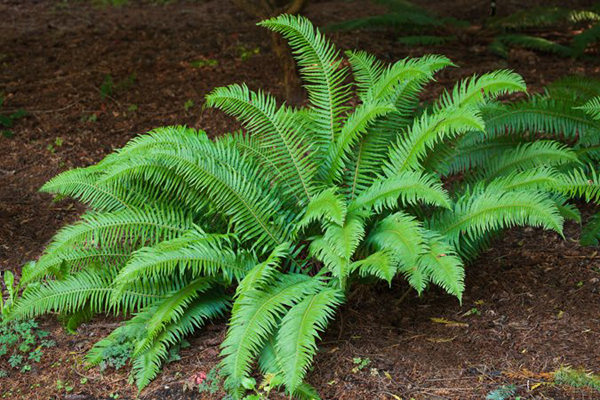
Ferns are a group of epiphytic plants that mostly grow in tropical climates. They are characterised by their feather-like fronds which can be finely dividied or leathery depending on the species. Fenrs are non-flowering plants and reproduce via spores typically found on the undersides of their fronds.
The world of Ferns is incredibly diverse with thousands of species. Some of the common varieties are Green Fantasy Fern, Boston Fenr, Dallas Fern and Rabbit’s Foot Fern. All of these can be grown successfully in terrariums and vivariums.
Ferns are a popular choice among terrarium hobbyists due to their love for humidity and low light conditions. They are mostly used as a background plant and can fill up the space gracefully providing a lush backdrop. They are mostly propagated through runners and rhizome segment cuttings.
Climbers and Creepers
13. Ficus Pumila

Ficus Pumila, commonly known as Creeping Fig or Climbing Fig is native to East Asia. The dwarf variety is known as Ficus Pumila Minima and is a very good choice for smaller builds. The most striking feature of Ficus Pumila is its lush heart-shaped foliage.
The small leathery leaves are typically dark green and grow densely along trailing stems. It is a low demand plant and can be easily planted as a cutting inside a terrarium, be it in the foregroudn or as a climing plant on hardscape or a moss wall on the background.
14. Peperomia Prostrata
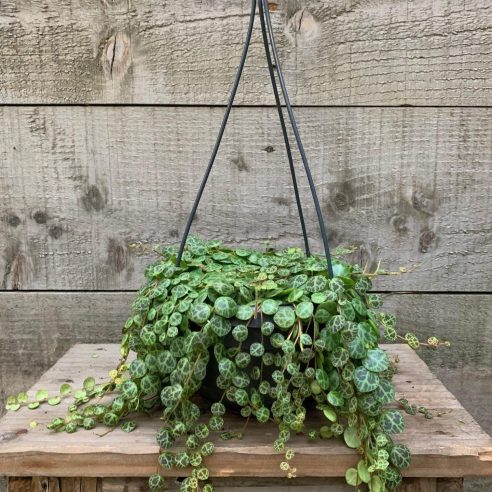
Peperomia Prostrata commonly known as athe String of Turtles is native to the tropical rainforests of South America. It bears small rounded leaves that are typically dark green with intricate patterns resembling the texture of a turtle’s shell, hence the common name.
Themese charming leaves are attacthed to slender trailing stems creating a cascade of greenery that makes this plant a visual delight. The plant doesn’t like too much water sitting on its leaves and hence it does best mounted on hardscpae elements inside a terrariu.
15. English Ivy

English Ivy is a woody perennial vine that is native to Europe and Western Asia and is relatively low demand. The plant boasts lush dark green and sometimes variegated five lobed leaves lending an elegant and classic appearance. It can be grown as a mid-ground or background climbing plant in a terrarium.
Now You Know The Best Plants for Closed Terrariums
Many terrarium kits available in the market already comes with a few terrarium plants but if you want to have a few more plants to make your terrarium looking gorgeous and more natural, now you know which plants to choose from. Hope this article will help you to select the best plants for closed terrariums and make it easier for beginner terrarium hobbyists choose the correct plants for their next terrarium projects.


